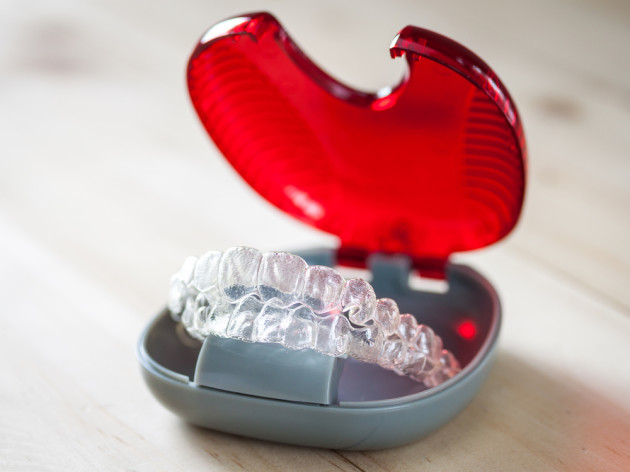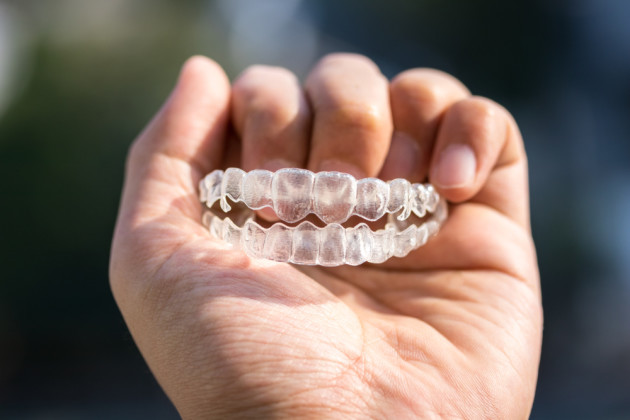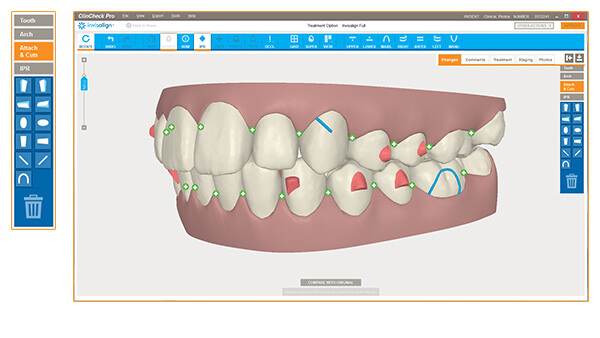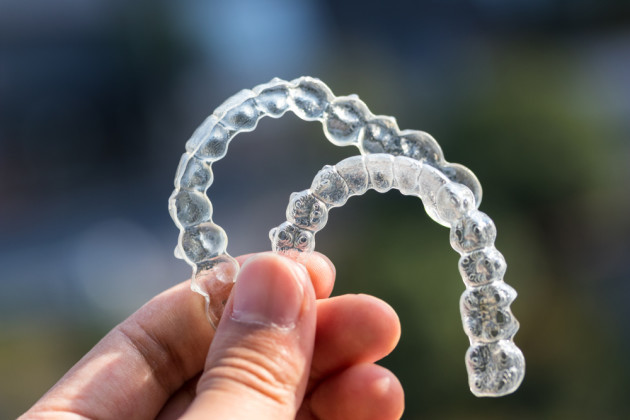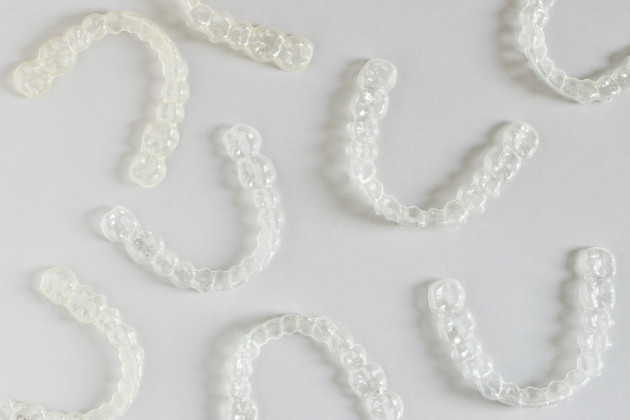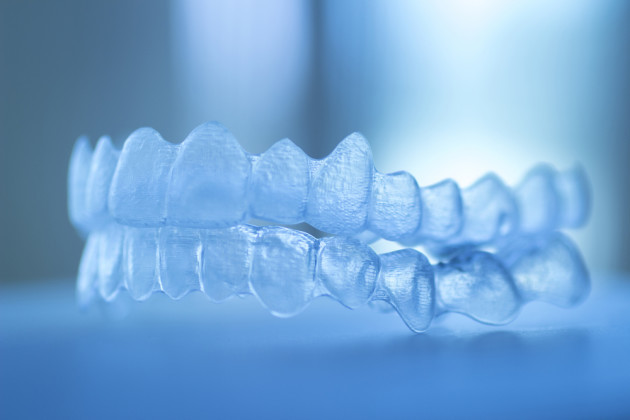THERE’S A WHOLE generation of young adults out there who are still feeling self conscious and uncomfortable with their crooked teeth, after they missed the boat on teenage orthodontics because of the financial strain that the recession put on their families a decade ago. For a lot of people in Ireland, braces had to take a back seat for a while.
And then there are adults well into their forties and fifties who always loved the idea of straightening up their teeth, but believed that they were way too old to do so. Chances are, if you saw another adult with braces, you’d probably look at them and think “Fair play!”, if you thought anything at all.
Yet, when we think of ourselves with braces, we’re fully convinced that every single person we will encounter for the duration of our time with braces is going to be judging us for getting braces as adults. In reality, nobody really cares! And you most definitely will not care once you’re finished with the braces, either.
There’s no shame in getting adult braces, at all. You might feel anxious about how long you’ll have them for, but in the grand scheme of things a year or two isn’t that long, and once it’s over you’re rewarded with straight teeth for eternity (as long as you make an effort to wear your retainer).
In January 2018, I decided I was just going to get it over with. Every day you spend putting it off is another day you’ll be wearing braces somewhere down the line, when you could have it finished with. I spoke to some people who were older than me who had gotten braces well after their teens and they were all very glad that they had done it.
A surprising number of these people had gotten braces as teenagers and then totally neglected their retainers, causing their teeth to begin to drift back to where they had originally been. So, they were on round two, and determined not to make the same mistakes the second time around. A handful of these people had gotten Invisalign, and said that they found it so much more convenient than braces.
It seemed like a no-brainer to go with the preferred option by people who had experienced both braces and Invisalign, so I organised a few consultations, and here I am in February 2019 in my last week of Invisalign aligners. Now that I’m basically finished with them, I thought I’d answer every question that somebody curious about Invisalign could possibly ask.
Firstly, how much do they cost?
After multiple consultations, I got prices ranging from between €3,500 and €5,000. You can read a bit more about those consultations below. The vast majority of orthodontists who offer Invisalign will allow you to pay this in installments.
My teeth are extremely crooked. Is it possible for me to get clear braces/Invisalign?
Because I had mainly spoken to people who had already had braces, I was convinced that my teeth were too crooked for me to be a realistic candidate for this type of orthodontic treatment. Anybody I knew with Invisalign had already had reasonably straight teeth beforehand, but mine were literally all over the place. There were some back teeth that didn’t seem to have any place at all, and were really disrupting things at the front of my mouth.
I was curious about whether this would be a problem, so I had a look at some of the before and after pics on the Invisalign subreddit and I was genuinely taken aback by the results some people were getting.
Of course not everybody out there is going to be able to get Invisalign, particularly (but not necessarily) if you have trouble with your bite, but it’s definitely worth booking a consultation with an orthodontist and having a chat about, if it’s something you’re considering.
In fact, maybe book multiple consultations – most of them are free.
The first consultation I went to left me thoroughly unimpressed. I didn’t even get to speak to an orthodontist. The receptionist sat me down in the waiting room, showed me what the Invisalign trays looked like and explained to me how they worked – which was fairly pointless, considering the fact that I had done all of this research online beforehand. I informed them of this, and they didn’t care, they just continued with their very well-practiced spiel and offered to book me in for my first appointment that evening.
They hadn’t even looked into my mouth yet, but were telling me that I could begin that evening if I was willing to pay a €500 deposit upfront. If I paid the whole fee for the Invisalign upfront (€3,500, I believe it was), I’d be able to get a 10% discount. While that’s a really good price, I was pretty uneasy with the idea of paying anything upfront without having an orthodontist examine my teeth properly. I asked if I could have a few days to think about it, and they told me, “Oh, that appointment later was a cancellation. We’re all booked out for the next eight weeks, so if you don’t go later on, we probably won’t be able to fit you in for a few months.” This was obviously a huge red flag for me.
I was going to give up then and there, and just call my regular dentist to book an appointment with the orthodontist in their office for braces, but I decided to try an orthodontist that one of my coworkers had gone to in town. At this consultation, the orthodontist had a really thorough look at my teeth and gave me a couple of X-rays too, which highlighted just how badly impacted my wisdom teeth were. So, before I began any kind of orthodontic treatment, I needed to get all four wisdom teeth out, or else they’d cause a lot more damage in the long term.
This was something that was completely overlooked in the first consultation, so on top of paying the €3,500, I would have had to pay for the extraction of my wisdom teeth too. My new orthodontist also informed me that even the most basic health insurance packages in Ireland will cover the extraction of wisdom teeth under general anesthetic, so when she referred me to a private clinic, she also saved me a considerable amount of money too – quelling my suspicions that they only wanted to take my wisdom teeth out so that I’d pay them even more money.
How does Invisalign even work?
Basically, you get these little clips attached to your teeth – they’re called attachments. These secure a clear plastic aligner to your teeth (it looks just like a retainer), and they slowly drag your teeth in whatever direction is necessary to get the results that you and your orthodontist have agreed on beforehand. They’ll use Clincheck software to create a projection of what your teeth will look like at every stage of your treatment – so basically, you’ll know what your teeth will look like before you’ve even begun treatment.
This is what Clincheck looks like:
And this is what the aligners look like:
You can take the aligner out at any time so that you can eat, brush your teeth, etc. You can then put it back in yourself, without the help of an orthodontist or any kind of professional.
How long do I have to wear an aligner for?
For the best results and to get things over with as comfortably and as quickly as possible, you should aim to wear the aligner for 22 or 23 hours per day. It might sound like a lot, but you’ll be surprised at how little time you actually spend eating every day.
Depending on how your treatment is scheduled, you could be wearing an aligner for 5-14 days at a time. Let’s just say ten days, because that’s how long I had to wear each of my aligners for. Every time I paid a visit to the orthodontist’s office, I was given a couple of aligners to bring home, which saved me the trips I would have had to make to get braces tightened every couple of weeks, had I gone with braces in the end. Usually, I’d get about four packets of aligners, so I’d only have to return to the orthodontist every 40 days so that they could make sure that everything was going as planned.
No, Kelly. I meant how long as in how many months/years will I have to wear an aligner for?
It really depends. The orthodontist should be able to give you a good idea at your consultation, but they won’t know for definite until they’ve sent impressions of your teeth off to Invisalign and received your Clincheck projections. By the time I had my wisdom teeth removed and had recovered, it was May 2018 when I got my first aligner. Now, in February 2019, I’m just about finished. For some people – even people with fairly crooked teeth – it can take a couple of months. For others, it could be anywhere between a year and two years.
Does it hurt?
Nah. Not really. Usually I move onto a new aligner just before bedtime so that I sleep through the worst of the discomfort, which is a #lifehack but if you change aligner first thing in the morning, you’re not going to be in unbearable pain for the entire day – and if it is really bad, painkillers will make a big difference. Any discomfort I had just felt like my teeth were especially sensitive for a day or two after I had changed aligner.
I’ve gone through 26 aligners, and 25 of these have been mildly uncomfortable or felt a little tight for the first couple of days, and one was actually quite sore – but that was because it was scraping my gum. If that happens to you, you can bring it back to your orthodontist and get it filed, but I was too lazy to and I just waited it out.
Can you drink with them in?
You have to take your aligners out every time you drink tea/coffee or else they’re going to stain. You can drink water, or any other clear liquid with Invisalign in, but if you’re going to drink any coloured drinks, you’ll have to take them out. Unless you’ve got a day or two left with your aligners. Then you might give in to laziness. But don’t give into laziness with hot drinks, because these can warp the plastic.
If you’re going on a night out, you’ll be fine, but just make sure you brush your teeth and the aligner really well when you get home. Easier said than done, but if you skip this once you’ll learn your lesson.
Can you feel the aligners in your mouth?
For the first couple of days I was quite aware of it, but after a while you forget they’re there. In fact, with the spiky little attachments on your teeth, it’s probably more comfortable to have the aligners in than it is to take them out.
What are the cons of Invisalign?
1. No joke – the main drawback of Invisalign for me was the number of times I had to turn down snacks that were offered to me because I was too lazy to take out the Invisalign, eat, then brush my teeth and the Invisalign again.
Since May 2018, every time someone has offered me a sweet, a crisp, or a taste of some interesting new food, I’ve had to politely decline. It was also a massive pain in the arse to wear at music festivals for this reason too.
It’s hard enough to make yourself feel clean at a festival without having to worry about finding somewhere to clean your Invisalign, or having to clean it in front of an audience at the queue for the water taps.
2. In some rare cases, they can cost the same amount as braces, but a lot of the time they’re actually quite a bit more expensive.
3. With traditional braces, you have just a little bit more control of how your teeth look and you can ask your orthodontist to make minor alterations – however, you are also offered the option of getting refinements once you reach the end of your Invisalign. Some orthodontists will include these refinements in the total price of your treatment, others will not. It’s worth checking at a consultation.
4. On top of that, it can be a bit awkward taking your Invisalign out when you need to eat in public, especially if you’re worried about grossing others out. But hey, you can always go to a bathroom or do it somewhere privately if you’re worried about that. Chances are, you’ll become much lazier as time goes by and you’ll care less and less about privacy. At the end of the day, this might be a little bit handier than having to deal with getting pieces of food caught in braces.
5. Another con is the fact that they will stain if you drink tea/coffee or eat a neon yellow lemon sorbet and think you can get away with it. Speaking from experience.
6. You’ll need to wear a retainer afterwards, but this is a con of braces too.


